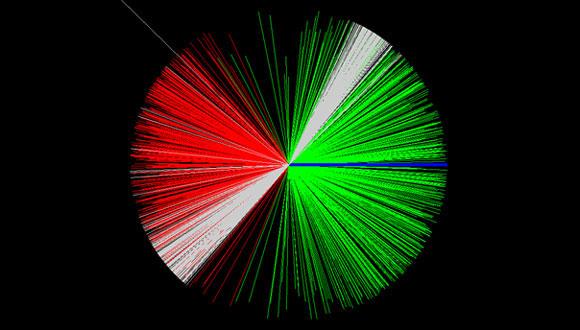Joint Seminar in Nuclear Physics
PROGRAM
14:00 - 14:30 refreshments + organization
14:30 - 15:30 "Quantum chaos and thermalization in a small isolated system of interacting particles", Vladimir Zelevinsky, Michigan State University, USA
Abstract:
Atomic nuclei belong to the class of mesoscopic quantum systems with strong interaction between constituents. In mesoscopic systems, the presence of statistical features coexists with the opportunities to study, the oretically and experimentally, individual quantum states. Statistical aspects include chaotic regularities of spectra, wave functions and reaction amplitudes, leading to thermalization without any external heat bath. Strong interactions mix simple particle states creating complicated many body functions with characteristic signatures of quantum chaos. This allows to treat the system statistically using thermodynamic concepts and obtain physical results avoiding the diagonalization of prohibitively huge Hamiltonian matrices. The variation of the Hamiltonian displays the special role of certain matrix elements responsible for collective phenomena on the background of chaos driven by numerous collision-like interactions. Some theoretical problems are still waiting for their solution.
References:
1. F. Borgonovi, F.M. Izrailev, L.F. Santos, and V.G. Zelevinsky. Quantum chaos and thermalization in isolated systems of interacting particles. Physics Reports 626, 1 (2016).
2. V. Zelevinsky and A. Volya, Chaotic Features of Nuclear Structure and Dynamics: Selected Topics. Physica Scripta 91, 033006 (2016).
3. S. Karampagia and V. Zelevinsky. Nuclear shape transitions, level density, and underlying interactions. Phys. Rev. C 94 , 014321 (2016).
4. S. Karampagia, A. Renzaglia, and V. Zelevinsky. Quantum phase transitions and collective enhancement of level density in odd-A and odd-odd nuclei. Nucl. Phys. A 962, 46 (2017).
15:30 - 16:00 Coffee Break
16:00 - 17:00 "Study of Short Range Correlations via the A(e,e'n) reaction", Meytal Duer, Tel-Aviv University
Abstract:
Without short range interaction, the Pauli exclusion principle causes the majority nucleons (usually neutrons) in an asymmetric nucleus to have higher average momentum than the minority. High-energy electron scattering measurements showed that the short range interaction between the nucleons mainly form correlated high momentum neutron-proton pairs in the nucleus. Thus, in neutron-rich nuclei, protons have greater probability than neutrons to have momentum larger than the Fermi momentum. Based on our new data from CLAS at Jeerson Laboratory we claim that this results in protons having higher average momentum than neutrons, i.e., an inversion of the momentum sharing between majority and minority nucleons.


